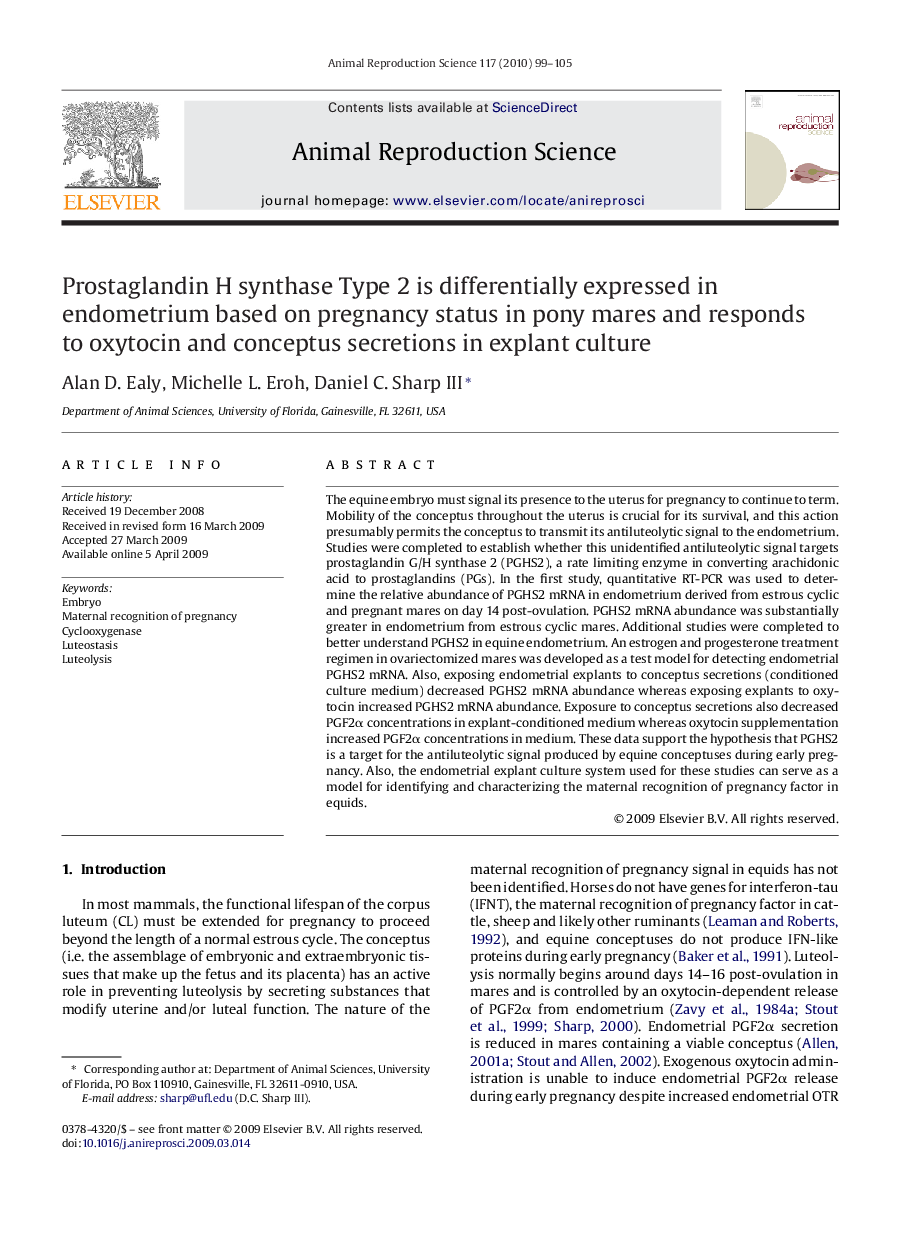| کد مقاله | کد نشریه | سال انتشار | مقاله انگلیسی | نسخه تمام متن |
|---|---|---|---|---|
| 2073982 | 1544788 | 2010 | 7 صفحه PDF | دانلود رایگان |

The equine embryo must signal its presence to the uterus for pregnancy to continue to term. Mobility of the conceptus throughout the uterus is crucial for its survival, and this action presumably permits the conceptus to transmit its antiluteolytic signal to the endometrium. Studies were completed to establish whether this unidentified antiluteolytic signal targets prostaglandin G/H synthase 2 (PGHS2), a rate limiting enzyme in converting arachidonic acid to prostaglandins (PGs). In the first study, quantitative RT-PCR was used to determine the relative abundance of PGHS2 mRNA in endometrium derived from estrous cyclic and pregnant mares on day 14 post-ovulation. PGHS2 mRNA abundance was substantially greater in endometrium from estrous cyclic mares. Additional studies were completed to better understand PGHS2 in equine endometrium. An estrogen and progesterone treatment regimen in ovariectomized mares was developed as a test model for detecting endometrial PGHS2 mRNA. Also, exposing endometrial explants to conceptus secretions (conditioned culture medium) decreased PGHS2 mRNA abundance whereas exposing explants to oxytocin increased PGHS2 mRNA abundance. Exposure to conceptus secretions also decreased PGF2α concentrations in explant-conditioned medium whereas oxytocin supplementation increased PGF2α concentrations in medium. These data support the hypothesis that PGHS2 is a target for the antiluteolytic signal produced by equine conceptuses during early pregnancy. Also, the endometrial explant culture system used for these studies can serve as a model for identifying and characterizing the maternal recognition of pregnancy factor in equids.
Journal: Animal Reproduction Science - Volume 117, Issues 1–2, January 2010, Pages 99–105